Thinking about how to invest in the Internet, blockchain and digital currency in the next decade from Web 3.0
Preface: Ten years have elapsed since the birth of Bitcoin, and the concept of blockchain and digital currency has been well known. Today, the industry has frequently mentioned the concept of Web 3.0, but with regard to what Web 3.0 is, few people can make it clear. This article will take you through the ins and outs of Web 3.0, and de- authenticize the various statements of Web 3.0, and finally give a reflection on the future direction of Web 3.0.
★ Directory ★
First, information
Second, the evolution of the Internet
- "Zcash please consider switching to PoS", this proposal from the community is a bit bold
- BitMEX Institute: The Bitcoin Foundation's unknown historical secrets
- Development and community are two-pronged! ETC Labs welcomes iZbreaker and Second State eco-partners
1. One-way flow of Web 1.0
2. Two-way interactive Web 2.0
3. Decentralized Web 3.0
Third, Web 3.0
Information sharing
2. The birth of digital currency
3. Decentralized application platform
4. Project under development
Fourth, thinking about the future development of the application platform
01
information
"Information exchange is the basic needs of mankind"
Human beings are both producers and consumers of information. Information exchange is an indispensable part of the production and consumption process. In the era of no Internet, the means of information exchange is very limited. People can only come together in person or through letters. Take the knowledge as an example: teachers teach, students listen, students ask questions, teachers answer. Students gain new knowledge by communicating with their teachers. Take commodity trading as an example: shop around, bargain, agree, hand over money, and deliver first hand. Buyers and sellers completed the transaction through information exchange.
In such an exchange process, the characteristics of information persistence, privacy, and tamper resistance are difficult to guarantee.

Above: The "sleeves in the sleeves" section of the TV drama house, the way of ancient Chinese private transactions
The emergence of the Internet has greatly improved the efficiency and quality of information exchange.
The way people acquire knowledge has become search engines, knowledge, wikis, online classes. Any problem, as long as you easily click on your computer or mobile phone, the answer will be returned to you immediately in the form of pictures, text and video.
The way people conduct transactions has also become the process of Taobao browsing, Alipay payment, express delivery, and confirmation of receipt. Going out of the house, looking at the world's goods, shopping has become very convenient.
02
Internet evolution history
"Productivity determines production relations, and production relations will counteract productivity."
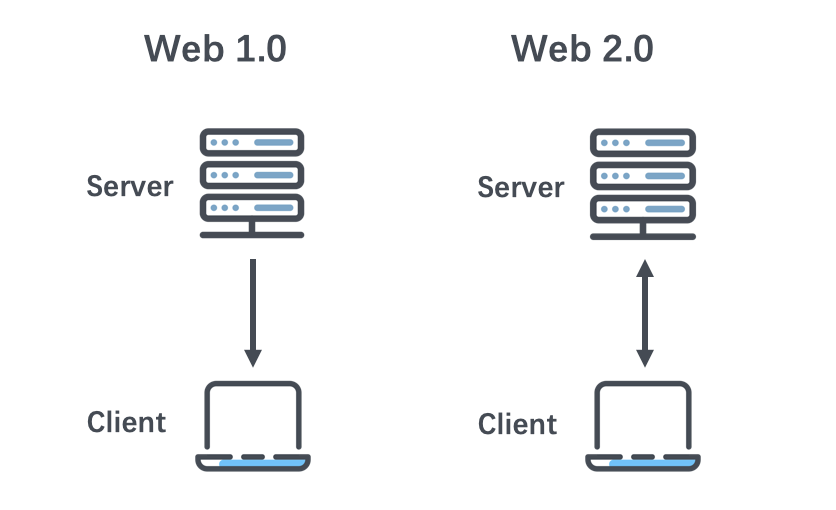
Figure 1: Web 1.0 and Web 2.0, one-way and two-way flow of information
- One-way flow of Web 1.0
The earliest of the Internet was the Web 1.0 model. At that time, information can only flow from the Server to the Client in one direction . The website is read-only for all users.
Typical applications for Web 1.0 include URL navigation, portals, and more. We were fortunate enough to find a screenshot of the well-known website navigation Hao123 in 2011 to help us review the history of Web 1.0, as shown below. It can be seen that all information of the website is statically presented on the webpage for the user to browse. The four major portal websites in China, Sina, Netease, Sohu, and Tencent, were all located at the top of the page. It can also be seen that in 2011, Web 1.0 applications dominated the market.
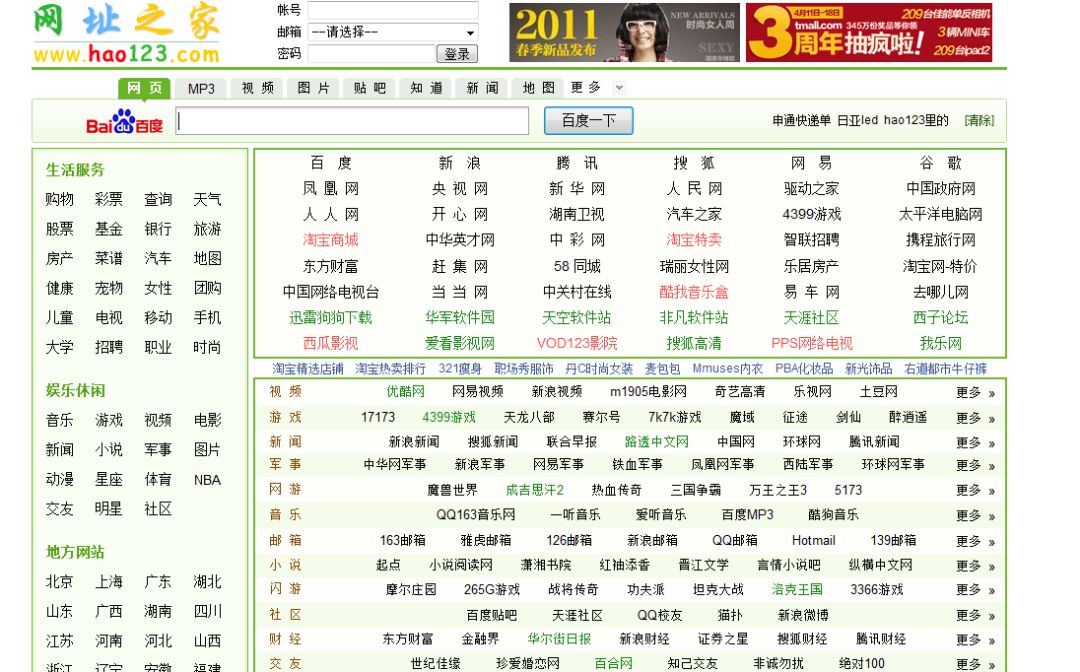
Figure 2: 2011 Hao123 screenshot, Web 1.0 website dominates the picture (picture from Baidu know) Web 1.0 mode, production relationship is a simple producer / consumer model. Server is responsible for production information: URL navigation to collect URLs, portals to write news, are the process of producing information. Client is responsible for consumer information: click on the website link to jump, read the news, are the process of consumer information.
- Two-way interactive Web 2.0
However, one-way information flow can not meet the needs of information exchange. After the rapid development of the back-end technology of websites such as PHP and Java and the front-end technology of websites such as Ajax and JavaScript, the Internet quickly entered the era of Web 2.0. At this time, the information can flow in both directions between the Server and the Client. The website is readable and readable by the user.
Web 2.0 has produced a lot of applications. Today, most of the applications we use every day are working in Web 2.0 mode. Its application mainly consists of two categories, let us take the screenshot of today's Hao123 as an example:
- Server provides tools, and the client interacts with the server to use the tools. Typical applications are search engines, chat tools, payment tools, online games, and more. For example, Baidu, Baidu map, and 12306 in the figure belong to this category.
- Server provides a platform, and the client can upload information, obtain information, and communicate between users through the platform. Typical applications include social networks, e-commerce platforms, and the like. For example, Taobao.com, Jingdong Mall, 58 City, and Zhixiang all belong to this category.

Figure 3: The screenshot of Hao123 in 2019. The Web 2.0 website dominates the production relationship of Web 2.0. Compared with Web 1.0, there is a huge change: First, the server provides the client with more information than just calculation, storage. Various services, including transactions and logistics. Second, the client must interact with the server to use the services provided by the server. Finally, the information provided by the server can be produced not only by itself but also by the client. The emergence and development of Web 2.0 is a good example of two important points in historical materialism :
1. Productivity determines the production relationship. With the increasing amount of information produced on the Internet, Web 1.0 has been unable to meet the needs of productivity, and Web 2.0 came into being. For example, at that time, with the continuous increase of the website, the basic website navigation has been unable to meet the retrieval requirements of massive websites, so the search engine was generated. For example, Alibaba's initial model is the corporate yellow pages, but with the continuous increase of enterprises and commodities, it gradually evolved into an e-commerce platform.
2. Production relations will be counterproductive to productivity. After Web 2.0 changed the production relationship between Internet nodes, Client has the dual identity of information producers and consumers, which further stimulated the ability and willingness of Client to produce information. In such an environment, firstly, a platform based on UGC (user-produced content) such as BBS and social network was generated, and an application mainly based on PGC (Professional Production Content) such as live broadcast and short video was ushered in. The amount of information and types of information on the Internet has been further enhanced.
But with the further increase in the amount of information and information, the bottleneck of Web 2.0 is also reflected – that is , the centralization of Server . In the Client/Server mode of Web 2.0, Server becomes the "mediation" of information: all information will pass through the Server, and some will be stored in the Server. So, can we fully trust that Server will process this information correctly, appropriately, and as appropriate?

Table 1: The answer to the crisis of trust brought about by Server Centralization is obviously no, the centralization of Server is an insurmountable obstacle to the Web 2.0 model. This problem can only be completely solved by changing the production relationship between Internet nodes and letting the information no longer pass through the centralized server.
- Decentralized Web 3.0
In this context, the concept of Web 3.0 has gradually emerged. The core idea of Web 3.0 is decentralization, also known as P2P (Peer-To-Peer). In the Web 3.0 mode, nodes exchange information through direct connections without the need for a centralized server. All nodes are peer-to-peer, not distinguishing between Client and Server, but collectively called Peer. Peer needs to adhere to specific computing, storage, network and other protocols to connect other Peer to join the decentralized application, and provide certain computing, storage, bandwidth and other resources to maintain the application's operation.
Myth 1: Semantic Web, artificial intelligence (AI) and other technologies are Web 3.0. Analysis: These technologies can be seen as advances in production tools. They enhance people's ability to produce information and exchange information, but they do not change the production relationship in essence, so they cannot be considered as Web 3.0.
03
Web 3.0
"Different decentralized production relations"
- Information Sharing
Most people may not have noticed that the earliest attempts at Web 3.0 actually came from a technology that has been used to date: BT (BitTorrent) . The motivation for BT generation is to solve the problem of insufficient bandwidth when transferring large files. In the Client/Server mode, after the server releases a large file (such as operating system, video files, game installation package, etc.), it will face a large number of Clients downloading at the same time. Due to the limited bandwidth of the server, there is a problem that the client download speed is too slow. This is a typical scenario where productivity is not met and productivity is not met.
BT therefore designed a decentralized file transfer solution. When Peer publishes a file, it splits the file into many small data blocks for other Peer to download, and simultaneously publishes the hash values of all data blocks for verification. When other Peer downloads the data block and performs hash value verification, it will provide more Peer downloads. Finally, the files are distributed in multiple Peers in the form of data blocks. When a new downloader downloads a file, it actually downloads different parts of the file from multiple peers at the same time and eventually stitches them into a complete file. The pressure of bandwidth becomes shared by multiple peers, and the download speed is improved.
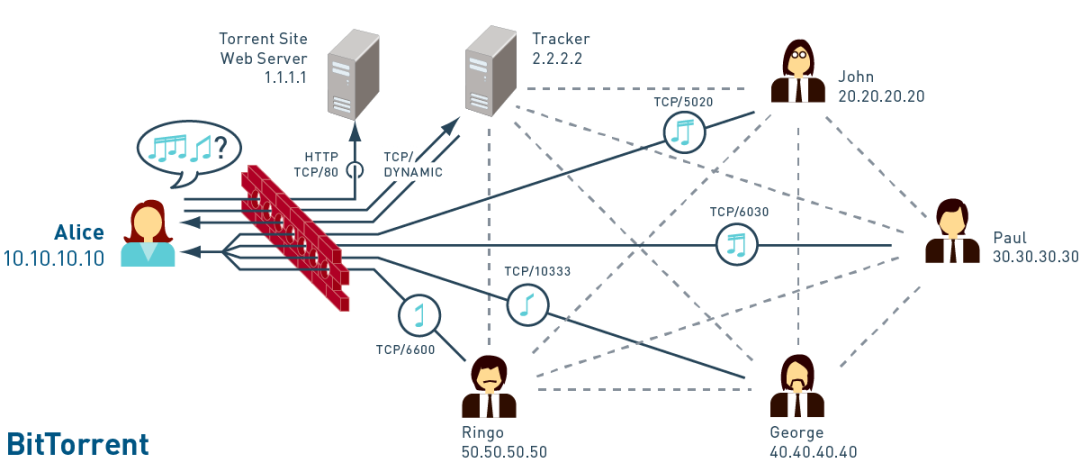
Figure 4: BT's network structure (picture from Threestory Studio) In the original BT design, in addition to Peer, one or more Tracker nodes were needed to record in real time which Peer each file was distributed. The downloader will connect several Trackers to get the Peer information of the file, and then decide which Peer to connect to get the file. Traker is usually maintained by some download stations. Subsequently, BT joined the design of Distributed Hash Table (DHT) , and distributed the mapping relationship between files and nodes in multiple Peers, thus realizing a completely peer-to-peer network. In today's BT network, Tracker and DHT modes coexist.
There is still a problem with BT: the lack of incentives for Peer. This caused some Peer to download only and not upload, which affects the file transfer of the entire network. Later, the PT (Private Tracker) mode appeared, which is the private Tracker. PT will let each connected Peer report its own upload volume and download volume, thus giving Peer with higher "upload and download ratio" better treatment: point reward, higher download priority, bandwidth and so on. However, BT has solved the problem of centralization of Server well, as shown in the following table.
< 
Table 2: How BT solves the centralization problem of Server Based on the idea of BT, it has produced many similar Web 3.0 technologies, such as eMule, PPTV, etc., and also produced Internet products that we know well, such as Thunder and VeryCD. But then, these applications have gone down. Because with the emergence and development of technologies such as CDN and network disk, the bandwidth problem that BT mainly solves is also solved in the Web 2.0 mode.
BT's Web 3.0 features, such as privacy and credibility, are not particularly important to users. Coupled with the severe crackdown on piracy in various countries, BT's market share has shrunk significantly compared to its peak. In fact, since BT can work in different modes of Tracker, PT, and DHT, it corresponds to three different production relationships . The differences between them are as follows:  Table 3: Three Production Relationships of BT These attempts to bring some inspiration to the subsequent Web 3.0 system design: 1. Give the nodes a variety of different types, which is more conducive to stimulating the user's vitality. Because the purpose of using the system by different users is not consistent. In BT, some users are downloading data, some are sharing data, and some are building communities. Users need to select the corresponding type of node to run according to their own needs, and a completely peer-to-peer network can't do this. 2. Properly motivate the nodes that contribute to the service, which is more conducive to motivating users to contribute to the system. If there is no incentive mechanism, some malicious nodes will not comply with the agreement, only use the system but not contribute. For example, in BT, only downloads are not uploaded.
Table 3: Three Production Relationships of BT These attempts to bring some inspiration to the subsequent Web 3.0 system design: 1. Give the nodes a variety of different types, which is more conducive to stimulating the user's vitality. Because the purpose of using the system by different users is not consistent. In BT, some users are downloading data, some are sharing data, and some are building communities. Users need to select the corresponding type of node to run according to their own needs, and a completely peer-to-peer network can't do this. 2. Properly motivate the nodes that contribute to the service, which is more conducive to motivating users to contribute to the system. If there is no incentive mechanism, some malicious nodes will not comply with the agreement, only use the system but not contribute. For example, in BT, only downloads are not uploaded.
- The birth of digital currency
The emergence of Bitcoin in 2009 brought a new class of applications to Web 3.0 – digital currency. The motivation proposed by Bitcoin is to establish a global monetary system and payment network, which is difficult to achieve in the Client/Server mode. Because of the centralization of Server, including data loss, privacy protection, and trusted computing, it is very deadly for currency and payment applications. In addition, Server will face government regulation, and the currency and payment systems established by a single center are difficult to be accepted by the world.
Bitcoin's design draws on BT's experience, giving nodes different types and rewarding the nodes that contribute to the service. Bitcoin nodes are divided into full nodes and light nodes. The entire node is responsible for maintaining the service and can also use the service. Light nodes can only use services. The whole node is divided into ordinary full nodes and miners, and the miners provide additional computing power in exchange for digital currency as a reward.
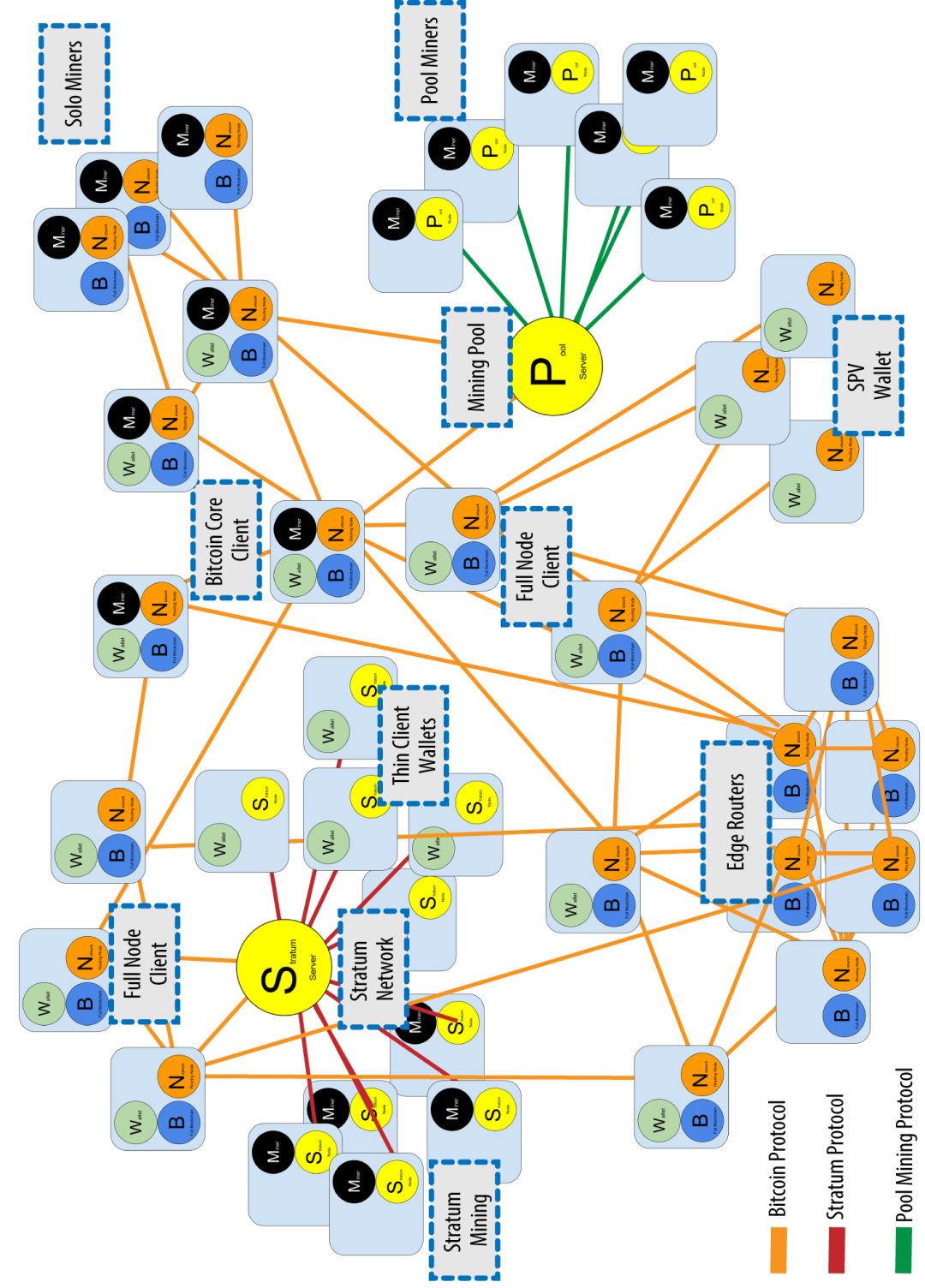 Figure 5: Bitcoin network structure (picture from Mastering Bitcoin)
Figure 5: Bitcoin network structure (picture from Mastering Bitcoin)
Bitcoin solves the centralization problem of Server by:

Table 4: How Bitcoin solves the centralization problem of Server The production relationship of Bitcoin can be summarized as: Some nodes provide services, and all nodes use services. All nodes are the providers of services and are responsible for synchronizing information and verifying information. Among them, miners are paid service providers, that is, provide computing power and receive rewards. Others are unpaid service providers. All nodes are users of the service: synchronizing transaction information from the network, and having a digital currency can initiate a transaction.
While Bitcoin is becoming more and more popular, it also faces some problems, but it has been solved to some extent with the development of technology. For example, the PoW consensus faced energy issues, and the PoS Consensus was later proposed and applied to new blockchain systems such as Qtum. For example, the amount of the transaction is stored in the blockchain in the form of plaintext, and there are certain privacy issues. Therefore, privacy algorithms such as zk-SNARK and MimbleWimble have been proposed and applied to new blockchain systems such as ZCash, Grin and Beam.
- Decentralized application platform
Ethereum opened a new Web 3.0 model after Bitcoin, which we call the decentralized application platform. Ethereum adds virtual machine functionality to the blockchain, allowing users to create decentralized applications on the chain, also known as smart contracts or DApps. The virtual machine on Ethereum is called EVM, and the application can be written in the corresponding Solidity language. As a result, a large number of DApps were born on Ethereum, including chain tokens, collectible games, decentralized exchanges, and forecast markets.
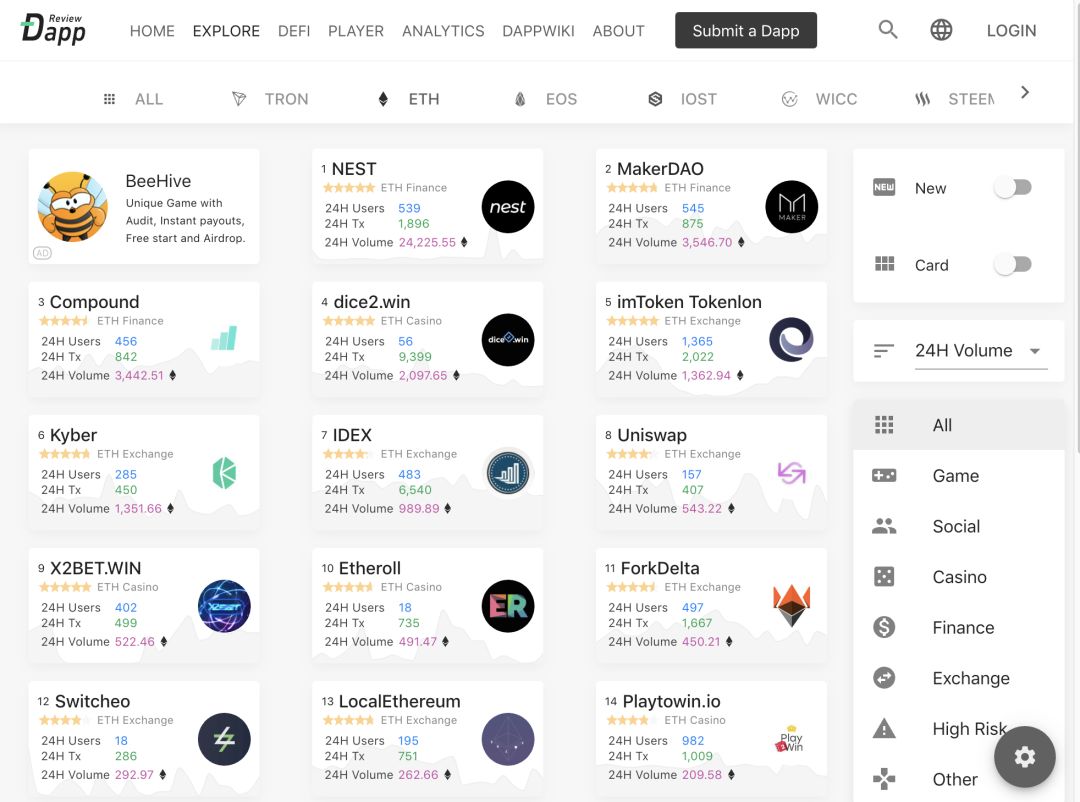
Figure 6: The DApp on Ethereum (picture from DApp Review) Ethereum's production relationship is still the mode in which some nodes provide services and all nodes use services. However, the services that can be used can perform DApp-related operations in addition to the digital currency transfer transactions. For example, a developer can publish a DApp, and a normal user can use the DApp interactively. This model gives Web 3.0 more possibilities, allowing developers the flexibility to build a wide variety of decentralized applications without having to care about the underlying decentralized protocols.
Ethereum is the first attempt to decentralize the application platform, and there are many obvious shortcomings. The most important of these is the performance issue. Because all nodes will run a smart contract on the chain to verify the correctness of the contract, resources such as computing and storage of the contract are limited by the CPU, memory, and hard disk of a single node. By reducing the degree of decentralization, EOS changed the consensus to dPoS, which means that the contract only needs 21 high-performance super nodes for verification, which improves the performance of the contract. But this still fails to break the resource limit of a single node, which is far from the performance of the application in Web 2.0 mode.
- Project under development
From the existing information sharing, digital currency, decentralized application platform three Web 3.0 application models can be seen two points:
- The underlying technology of Web 3.0 is not yet mature. On the one hand, the current underlying technology can provide weak performance and cannot support large-scale applications. On the other hand, many of the underlying technologies that Web 2.0 applications rely on have not yet appeared in the Web 3.0 model. When developers develop a new Web 3.0 application, they have to re-implement the underlying modules (including the transport layer, network layer, etc.). ) design and development.
- The application model of Web 3.0 remains to be explored. At present, the scenarios that Web 3.0 can be applied are too narrow. Many areas covered by Web 2.0, such as social networks and e-commerce platforms, cannot fall into the Web 3.0 model. These scenarios will encounter Server centralization issues in Web 2.0, but they are not currently resolved through the Web 3.0 model. In addition, Web 3.0 is expected to give birth to more new application models and production relationships.
The exploration of the underlying technology of Web 3.0 has been ongoing, and some projects are listed below for reference. The decentralized application platform is mainly to solve the performance problem of the DApp operating environment. The three categories of file storage, message communication, and database are to provide solutions for some common underlying technologies.
 Table 5: The underlying technology of Web 3.0, the project under development is still very early to explore the Web 3.0 application model. As you can see from the figure below, most of the Web 3.0 projects are copying some of the successful models in Web 2.0 without much thinking and innovation. Although many projects use decentralization techniques such as blockchain, the production relationship is still in the traditional Client/Server model, so that they often fall into serious misunderstandings.
Table 5: The underlying technology of Web 3.0, the project under development is still very early to explore the Web 3.0 application model. As you can see from the figure below, most of the Web 3.0 projects are copying some of the successful models in Web 2.0 without much thinking and innovation. Although many projects use decentralization techniques such as blockchain, the production relationship is still in the traditional Client/Server model, so that they often fall into serious misunderstandings.

Figure 7: Application Map for Web 3.0 (Image from Medium) Misunderstanding 2: Web 3.0 will replace 2.0, and all applications can be decentralized. Analysis: 1. Web 3.0 will coexist with 2.0 and 1.0. It can be seen that the emergence of Web 2.0 does not completely replace 1.0, the traditional portal still exists and meets the needs of some users. Therefore, Web 3.0 does not replace its predecessors, which are coexisting relationships. 2. Some applications are well implemented through the Web 2.0 model and do not require Web 3.0. For example, some projects want to implement decentralized distributed computing (also known as Volunteer Computing or Grid Computing) platforms, including Golem, Enigma, and Sonm. But in fact, the client / server mode can be achieved very well, NiceHash, BOINC are successful examples. 3. Web 3.0 can solve some of the problems that Web 2.0 can't solve. Just as Web 2.0 solves the problem of interaction between search engines and e-commerce, Web 3.0 currently addresses the bandwidth issues of file transfers and the global payment of money. 4. Web 3.0 will create a new application model and production relationship. Just as Web 2.0 was born with a network, Web 3.0 has also created a pattern of information sharing, digital currency, and decentralized application platforms that have never been seen before.
04
Thoughts on the future development of application platform
"The perfection of the application platform will bring about the outbreak of the application"
The emergence of Web 2.0, although in essence, is the result of the increase in the amount of information on the Internet, but the direct factor depends on the improvement of the underlying technology, especially the improvement of the application platform . Initially, developers need to use sophisticated MFC, QT and other technologies to develop client programs and servers for information interaction. With the advent and refinement of the Chrome browser and the popularity of the JavaScript browser-side programming language, everyone turned to building interactive web applications, or Web Apps. Finally, into the era of mobile Internet, iOS and Android occupy the mainstream position. Until today, Web 2.0 applications have been steadily concentrated on Chrome, iOS, and Android. Only when a sophisticated, universal application platform emerges, and developers no longer have to pay attention to the underlying technical details of network communication, message queues, etc., can put more thinking on the design of the application, resulting in the emergence of explosive applications. . Below we compare the Web 3.0 application platform under development:

Table 6: Web 3.0 decentralized application platform, project comparison in development can be seen, although the Web 3.0 application platform is still in the era of MFC, QT, but many projects are trying to evolve towards the next stage. From the development environment, virtual machines such as EVM and WASM have very limited functions, lacking OS-level interfaces such as IO, files, processes, threads, asynchronous, Socket, and scheduled tasks, while Linux virtual machines and cloud attempts may bring Come to turn. In terms of computing performance, although cross-chain and side-chain technologies can bring about expansion to some extent, applications still cannot achieve internal parallelism, and they are always limited by single-node performance. Therefore, the sub-chain expansion technology has more potential. In terms of storage performance, the global verifiable requirements result in all operations and intermediate states being recorded on the blockchain. The storage space is too large, and the P2P storage and chain storage being explored are worth looking forward to.
Based on the current trend of technology development, we believe that the decentralized application platform must meet at least the following requirements, which is the basis for developing more Web 3.0 applications: 1. Provide a reliable chain computing environment and provide high-performance chain Computing environment. 2. The calculation on the chain is guaranteed to be safe and verifiable. 3. The calculation under the chain allows intra-application concurrency, and resources such as calculation and storage can be expanded indefinitely. The technical difficulty is mainly in the calculation part of the chain, and there is no mature solution at present. But I believe that in the near future, it will definitely appear. By that time, the next decade of the Internet, blockchain and digital currency will be opened.
Disclaimer: This article represents only the author's personal views and does not represent the Qtum Quantum Chain Foundation's position and does not constitute any investment advice.
Author: Zheng Yi
Source: Quantum Chain (qtumchain)
We will continue to update Blocking; if you have any questions or suggestions, please contact us!
Was this article helpful?
93 out of 132 found this helpful
Related articles
- Sina's "Oasis" Thinking: The key to the development of the cryptocurrency industry lies in the business ecology behind it.
- Blockchain survey company Elliptic receives $23 million in Series B financing, led by SBI
- LAVA explains for you: Where is PoC better than PoW?
- Bitcoin smashed 19 times at the $10,000 mark in two months, and may not see 4-digit bitcoin again after this time.
- VanEck is not a bitcoin ETF, but it is still worth looking forward to.
- Wuzhen Conference, we want to talk about these six topics in detail | Babbitt Wuzhen Conference
- Content is king: how to break the blockchain industry






